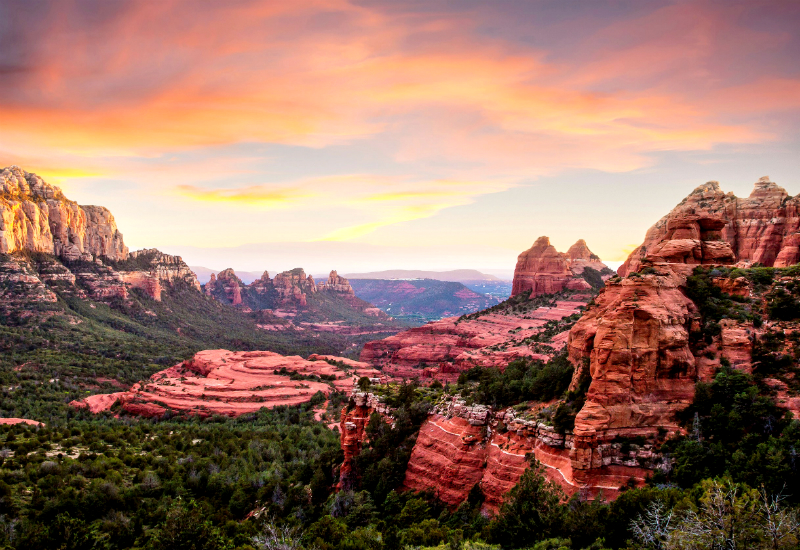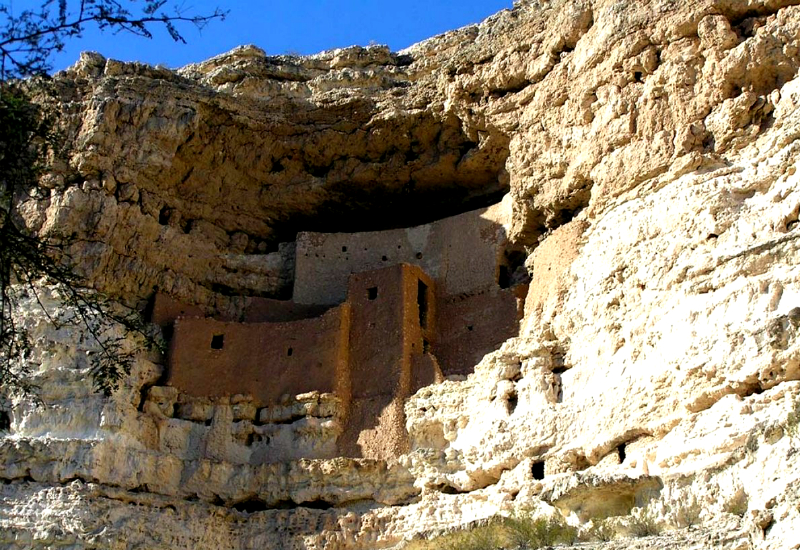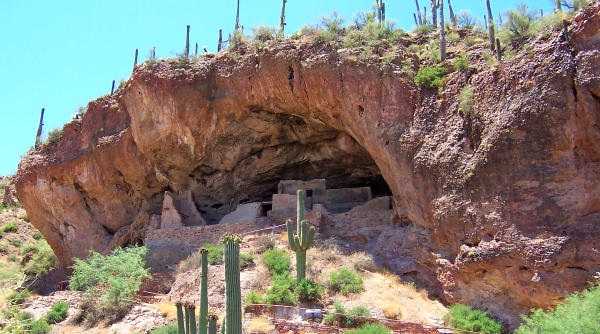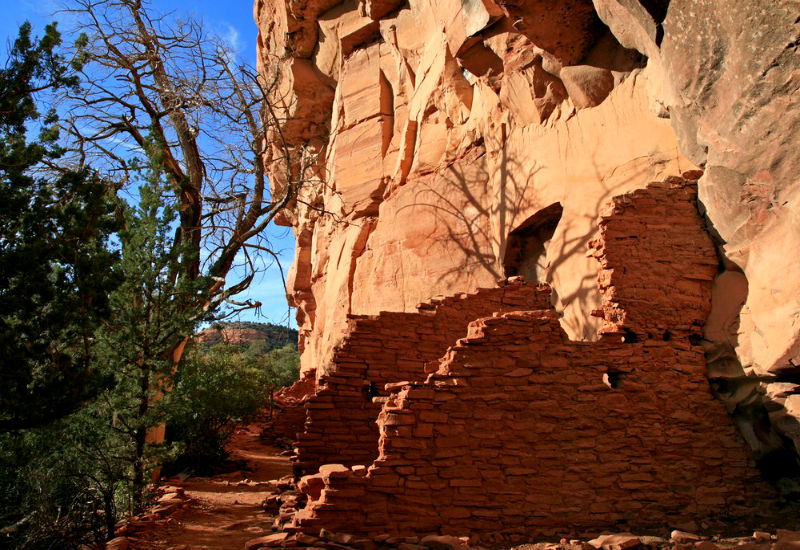In the American Southwest, the thin veil separating bygone eras from the present invites us to peer into different cultures and times. Among the best destinations for authentic American Indian experiences, Arizona stands out for its commitment to preserving its rich heritage. Back in 1906, well before Arizona achieved statehood, President Theodore Roosevelt designated Montezuma Castle as a National Monument—an honor bestowed upon only four initial sites.
Nestled in Arizona’s Verde Valley, Montezuma Castle is just one of many archaeological treasures dotting the region’s landscape. Explore the museum and meander along scenic trails through a serene sycamore grove, all set against the backdrop of towering limestone cliffs.
For those eager to explore the footsteps of the past, Sedona serves as the perfect base camp, inviting travelers to embark on a captivating journey through time and culture.
History of Sedona

Sedona – Verde Valley
Located in the central-western part of the state, Sedona sits at an elevation of 4,500 feet. This unique location places it squarely in a transition zone between the desert and forest, blessed with abundant sources of water.
This rich riparian habitat has played a crucial role as a migration corridor for both wildlife and ancient peoples, guiding their journeys.
In the distant past, thousands of years ago, early nomadic tribes traversed the land we now know as Sedona, living as hunters and gatherers. They constructed minimal structures and never settled in one place for an extended period.
However, the landscape took on a different significance with the arrival of the Sinagua people, who chose to establish a more lasting presence in this captivating region.
The Sinagua People and Montezuma Castle

Montezuma Castle
Around 650 CE, the Sinagua people, whose name translates to ‘those without water’ in Spanish, emerged as the prominent inhabitants of Sedona and the Verde Valley.
Initially, the Sinagua crafted round pithouses, which they partially buried and constructed using a framework of brush and poles. As their culture thrived, they evolved their architectural prowess, eventually creating intricate stone dwellings. Among these remarkable structures, Montezuma Castle stands out as a true marvel, boasting 20 rooms and nestled into a lofty limestone alcove. It is renowned as one of the most impeccably preserved cliff dwellings found in the United States.
When European-American explorers first encountered Montezuma Castle, they mistakenly attributed its origin to the Aztecs, leading to the name that persists to this day. The castle’s architecture is a testament to its ingenuity, with upper-level rooms featuring sturdy wooden beams mixed with clay and grass, accessed by ladders that were retracted nightly. The Sinagua inhabited this fortress-like dwelling from approximately 1100 to 1425 CE, leaving a lasting legacy in the annals of history.
V-Bar-V Heritage Site

V-Bar-V Heritage Site
Nestled along the same Beaver Creek corridor, and not too far from Montezuma Castle, lies the V-Bar-V Heritage Site—a place of profound historical significance. This site safeguards a mesmerizing collection of petroglyphs—ancient symbols meticulously etched into the stone walls. These intricate creations, attributed to the Sinagua people between 900 and 1300 AD, are believed to have served as a celestial calendar. This knowledge was vital for successful farming, particularly in arid landscapes, where the timing of crop planting was crucial.
Venturing further amid the towering cliffs to the west of Sedona, one discovers two more cultural treasures: the Palatki and Honanki Heritage Sites.
Palatki, which translates to “Red House” in Hopi, comprises two distinct sites accessible via hiking trails. One trail leads to a weathered two-story cliff dwelling, while the other guides you to alcoves adorned with a breathtaking array of pictographs—painted symbols that embellish the rocks. While many of these drawings are attributed to the Sinagua, others date back to the Archaic period, spanning 3,000 to 8,000 years ago. There are even more recent additions from the Yavapai and Apache people. Curious visitors have the opportunity to gain insight into the lives of these prehistoric inhabitants through engaging interactions with knowledgeable site stewards.
Honanki Heritage Site
Honanki, a name derived from the Hopi term for “Badger,” conceals a wealth of ancient remnants, standing as a testament to one of the most expansive population hubs in the Verde Valley.
Between 1100 and 1300 CE, the Sinagua people made Honanki their dwelling place but mysteriously vacated the site around 1425 CE. The enigmatic causes behind their departure continue to perplex scholars. Theories range from conflicts and prolonged droughts to the scourge of diseases. Alternatively, some speculate that numerous Sinagua families embarked on a northward journey, uniting with other ancestral Puebloan communities nestled within the Hopi mesas.
Tribal Communities of Today
Sedona proudly embraces its rich history, which remains an integral part of the community’s identity today. Various American Indian tribal communities, including the Yavapai, Apache, and Hopi, engage in cultural events within and around the town, extending warm invitations to visitors. Embark on a Jeep tour led by local guides, who possess deep knowledge of tribal lands and their significance.
For those with an affinity for history and culture within the confines of cozy galleries, Sedona’s renowned art establishments offer an exquisite array of locally crafted treasures. From jewelry and pottery to carvings, sculptures, and rugs, these galleries showcase the artistic prowess of local American Indians. Beyond their aesthetic appeal, each meticulously handcrafted item serves as a living testament to age-old traditions and customs.
In Sedona, the artistry, traditions, and multitude of heritage sites seamlessly bridge the past to the present, rendering time itself a mere whisper in the town’s storied history.



